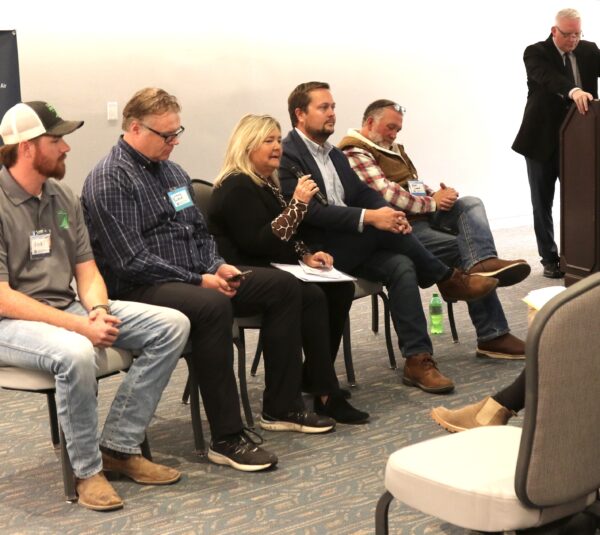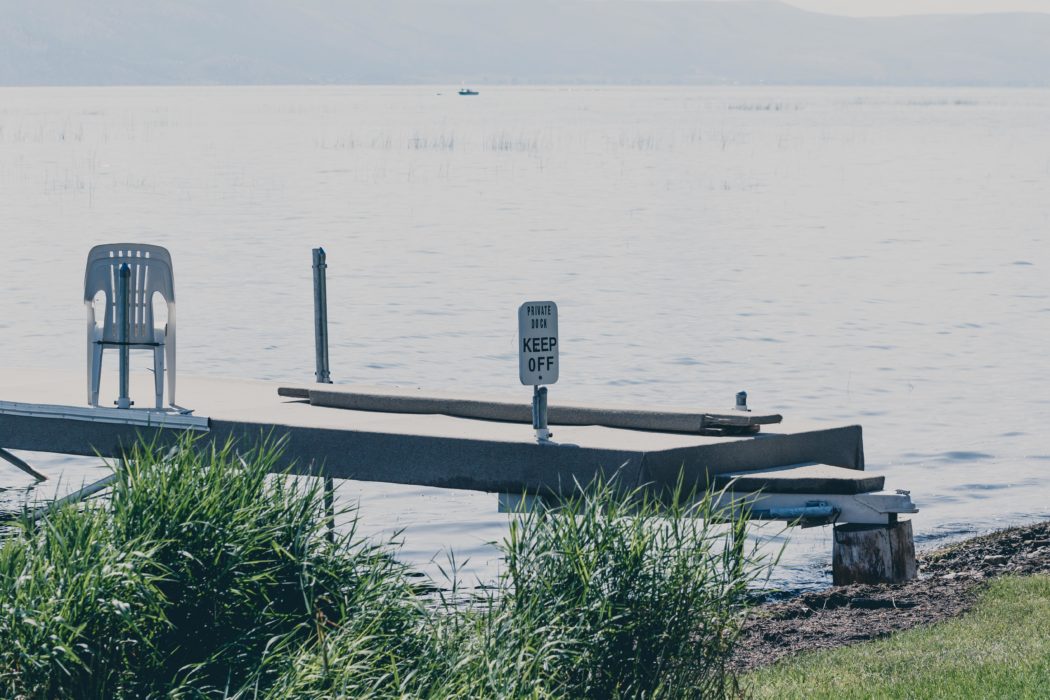USU kicks off Bear Lake Project
On Oct. 26, the Bear Lake Needs Assessment Project was kicked off by the Janet Quinney Lawson Institute for Land, Water and Air and the Utah Division of Forestry, Fire and State Lands. This research will inform future actions on Bear Lake and other surrounding areas.
Anna McEntire is a faculty advisor for Environment and Society at Utah State University who helped organize and plan the research project.
“Every graduate student, undergraduate and faculty member involved in this project are going to start putting together teams to address the issues related to Bear Lake,” McEntire said. “Our senior capstone forces are going to complete and finish these projects during the academic year.”
With 11 projects and teams spread throughout various departments at USU, the Bear Lake kickoff project will dive into research involving the lake restoration, water chemistry, contamination, the native fishes and more.
“We spent a lot of time in September wondering if this was going to be successful and if people were going to submit proposals for this project,” McEntire said. “However, when October came around we received a very fantastic group of proposals. We received 21 proposals and were able to award 11 grants. Those 11 grants will go to faculty and students in seven different colleges and 11 departments. We are rewarding two faculty grants, five graduate student grants and four class cohort grants.”
McEntire spent part of the kickoff event recognizing each grant and each team for what they are planning to do.
“By the end of this project, we hope that everyone involved in the project will know each other and be able to recognize what each person is doing to contribute,” McEntire said.

Bear Lake Project kickoff panel members and leaders answer questions for the community on Oct. 26.
Each team put together their focus by asking questions they and other people have had when it comes to Bear Lake. The grants ranged in participants and topics, but they are all focused on creating a better knowledge outlet for the community.
The first grant announced was for the team that will be focusing on the Irrigation Performance connection to water quality in Big Creek. Burdette Barker, Reganne Briggs, Sena Bildim and Matt Yost will spend their time researching the difference between surface and sprinkler irrigation.
There will also be teams that go out to Bear Lake to document the research. Jared Ragland’s team will take pictures in order to locate, define and disseminate the key issues within the land of Bear Lake.
Brennan Bean, Kevin Moon, Wei Zhang, Ben Shaw and Scout Jarman will head up the research project of the creation of models to predict the annual minimum and maximum elevation levels at Bear Lake and the estimations of future climate projections. The estimations from the models will be embedded in online data dashboards that will give state and local officials the option to interactively explore the lake elevation projections.
The Bear Lake project won’t just be taking place on the lake. There will be teams undergoing research on USU’s campus throughout the year.
Elizabeth Brunner, Jessica Schad and Stacia Ryder will be engaging students across three graduate courses and one undergraduate course in historic and qualitative research related to Bear Lake. This engagement will provide additional insight into the environmental concerns.
Lawrence Culver will be leading the class cohort research project that aims to collect Bear Lake resources that are already present at USU and make them more organized and facilitate their use for research and awareness.
There will also be teams undergoing projects that will provide a deeper insight to the water at Bear Lake.
Mario Harper will be using a submarine to holistically study the underwater environment of the lake. His goals include generating detailed longitudinal maps, sampling fishery health, assessing shoreline degradation and evaluating the underwater infrastructure.
David Cottle, one of the co-executives of the Bear Lake Watch, expressed his excitement for each project.
“I’m very excited to see how each of these projects gives us new insights,” David Cottle said. “I’m incredibly excited for the submarine. I think that is very inventive.”
Claudia Cottle is the other co-executive of the Bear Lake Watch who was able to give her reasons for why she thinks this project is so important.
“I feel the drive home message for us is that when you look and do your research, it is important to think about what the native Bear Lake was like,” Claudia Cottle said. ‘We’ve made many changes to the system with the power company, who have made great use of the lake. However, we think it is still important to fully understand the native Bear Lake so we can continue to do better and treat it like the treasure it was when we found it.”
Many other people were able to give advice when it comes to how to navigate the research that will be done. Rowdy Jensen is the sovereign lands coordinator in the Utah Division of Forestry, Fire and State Lands.
“You’re going to hear the word unique quite a bit during your research and conversations with people that work and live at Bear Lake,” Jensen said. “I think it is important to realize how multi-faceted that uniqueness really is. You have Blue Ribbons Fishery, the amazing color blue that will always be mentioned, some amazing recreational opportunities and so much more.”
Claudia Cottle said Bear Lake is very unique.
“It’s the B’s but not the buzzing ones. It’s blue, it’s beachy, it’s balanced and it’s beautiful,” Cottle remarked.
Ben Stireman is the deputy director of lands and minerals in the Utah Division of Forestry, Fire and State Lands.
“We always hear how peaceful the lake is and how that makes it so special,” Stireman said. “This is for the locals and the visitors. We have always believed there is a certain peacefulness to when you are at Bear Lake.”
The Bear Lake project will dive into ways to make sure the great parts about Bear Lake stay great. This project will research different ways to maintain the lake over years of progression and changes.

